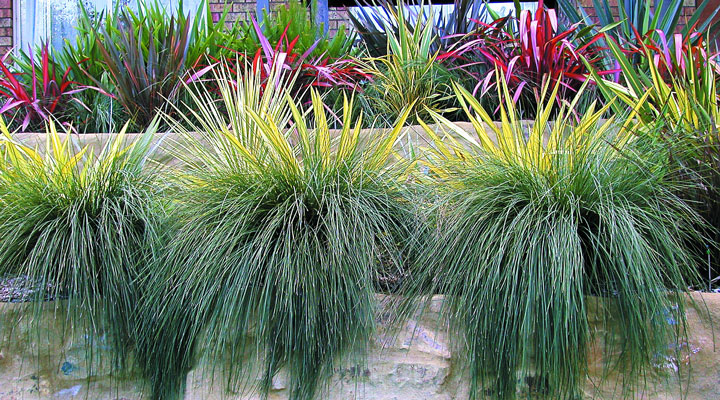The 9 most popular native plants for Sydney gardens
In the past, there was a firm belief that if you wanted to grow Australian native plants, you had to have a completely native garden. This was partly due environmental beliefs, partly aesthetic and partly because native plants were considered to have special growing requirements which didn’t mix well with other garden plants.
Well, times have changed. Australian native plants are very much part of mainstream gardening, widely used in commercial and public plantings, and starring in home gardens. There are many named varieties with better flowering, more compact growth and better garden tolerance than ever before. They are also now highly regarded as plants that suit both our climate and our soil conditions, and provide habitat for native creatures and insects. As a plus, many are winter to early-spring flowering, providing colour when other plants are dormant.
Caring for native plants
Give native plants the same basic care given to any garden plant – that is, water upon planting and prune if needed after flowering. Many are drought-hardy when established, but others need regular watering. Provide the correct light requirements, drainage and spacing as recommended on the plant label. Many natives demand low-phosphorus fertiliser, which is catered for with specialist native plant foods.
So, whether you want to grow a garden that’s entirely native or mix it up with plants from around the world, here are our top selections to introduce you to the beauty and adaptability of Australian native plants. Most will also grow in containers thriving in specialist native plant mix (such as Supersoil Professional Native Potting & Planting Mix).
Top 9 natives
Blueberry ash (Elaeocarpus reticulatus)
This slender evergreen native rainforest tree is one of the best tall screening plants, especially in shaded or narrow spaces. As well, it has pretty fringed white or pink flowers (‘Prima Donna’) - hence the common name "fairy petticoats" - followed by blue berries. It is popular with birds and insects and is even pollution-tolerant.
Bottlebrush (Callistemon and Hybrid Cultivars)
These spectacular, showy shrubs are as adaptable as they are beautiful. You can grow them as trees, shrubs, hedging (high and low, clipped or informal) or include them in a low-maintenance garden. They’ll even grow in the median strip in a multi-laned highway. That’s tough! The best-known selections (such as ‘King’s Park Special’) have red, bottlebrush-shaped flowers but there are also pink, white and mauve varieties.
Coastal rosemary (Westringia fruticosa)
This tough coastal shrub has long been popular in gardens as a shrub or hedge. It is now often used as a clipped or shaped feature plant. Low-growing varieties are also popular in playground or school plantings, or for containers. As well as its small, evergreen, green leaves, coastal rosemary has small white or blue/mauve flowers in spring, which attract beneficial insects. It is also a great choice for a seaside, poolside or low-maintenance planting. There are many named cultivars available.
Click to browse coastal rosemary
Correa (Correa and Hybrid Cultivars)
Correas are widely used as plants where a formal clipped hedge or even topiary feature is required or a foliage contrast as many have grey leaves. Correa alba is ideal for shaping into clipped balls. Recently some beautiful flowering forms have been released including ‘Federation Belle’, a form of Correa reflexa with yellow-tipped red bell-shaped flowers that are magnets for nectar-feeding birds and insects.
Fan flower (Scaevola and Hybrid Cultivars)
You can grow these native groundcover plants in a sunny garden or use them to trail over the edge of a container. They have pretty, fan-shaped, small flowers in blue but also mauve, pink or white so bring colour to any garden especially in spring when they are in peak flower. Lightly prune for more flowers.
Grevillea (Grevillea and Hybrid Cultivars)
Grevillea ‘Robyn Gordon’ is one of the most popular of all garden plants. It is a low-growing shrub that’s rarely with out a nectar-rich red flower that is sure to bring regular feathered visitors to your garden. ‘Robyn Gordon’ is just one of many shrubby grevilleas for gardens. There are also groundcover forms and others that you can train as slender, graceful small trees (for example ‘Moonlight’). Some grevilleas have large toothbrush-shaped flowers while others have smaller spidery flowers. As a rule, grevilleas are low care but grow best with a light prune after their main flowering flush. Feed in spring with low-phosphorus native plant food.
Kangaroo paw (Anigozanthos and Hybrid Cultivars)
Beloved for their curious paw-shaped flowers, kangaroo paws have had a real boost in garden worthiness and desirability with the availability of new varieties. There are kangaroo paws in every colour, from traditional reds and greens to orange, lavender and white. Grow small varieties in containers, while large forms are an excellent choice for mass planting as they form clumps 1-2m high. Prune away spent flower stems and leaves. To renovate a straggly clump, cut it back hard. Always use low-phosphorus native plant food.
Lemon myrtle (Backhousia citriodora)
This native rainforest tree is loved for its highly fragrant lemon-scented leaves that are a bush food used for flavouring. The trees also have fluffy white flowers in spring. Grow as a large tree, or keep pruned for a compact leafy shrub, hedge or screen.
Native grasses and grass-like plants
This is a category that includes many garden-worthy plants from the clumping lomandras and dianellas with their strappy green leaves to the feathery poa and other grasses. There are even native grasses available for use as lawn alternatives. Many in this group are ideal for use as edging plants.
Click to browse native grasses
Want more native plant ideas? Click here to browse Flower Power's extensive range of beautiful native plants, or pop in-store to chat to a horticulturist about what will work for your garden.










